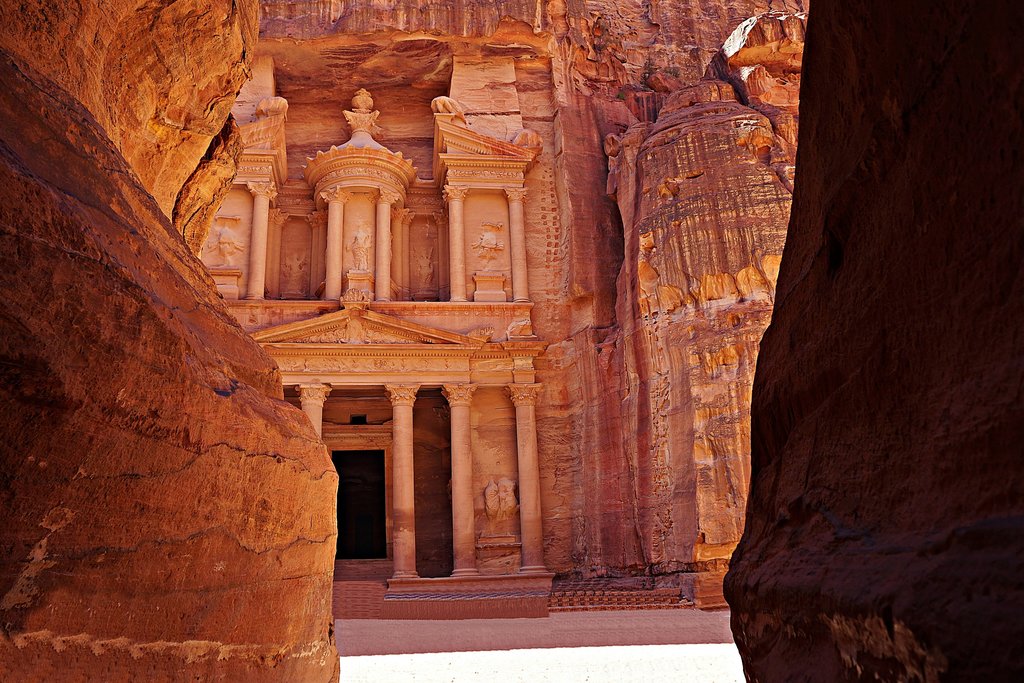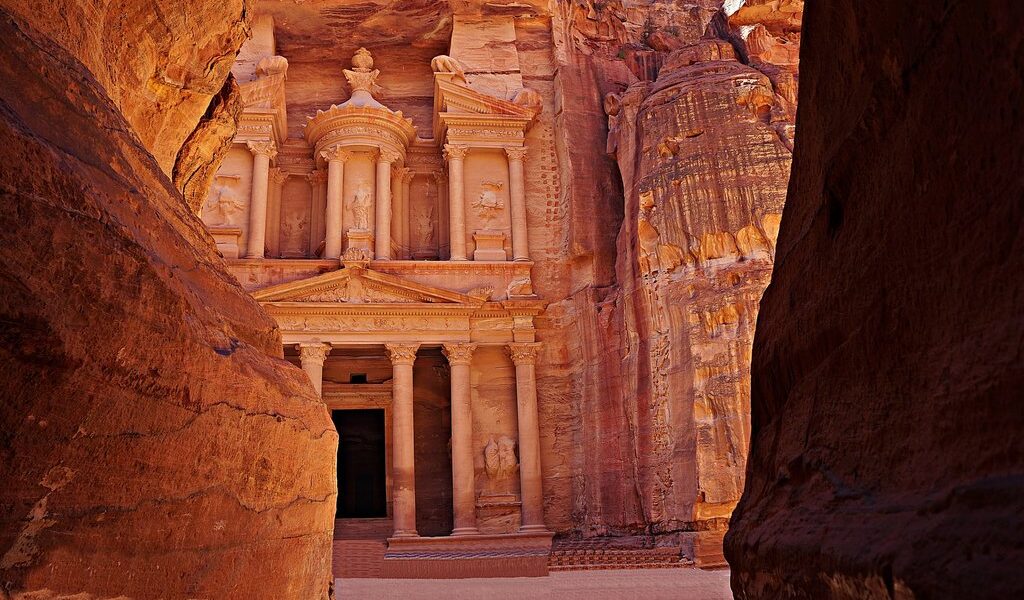
Spring is in the air, with plenty of warming sunshine. Temperatures are gradually rising and the winter rainfall is now but a rare trickle. The wadis are seamed with the first bloom of wildflowers—spears of flowering aloes, bursts of pick oleander, and masses of purple-black iris. But by the end of the month, Jordan’s high tourist season is well underway and you’ll have to share Petra with plenty of other tourists.
## Weather in Petra During March
In March, Petra experiences a transition from the cooler, often rainy conditions of winter. The frequent rainfall gradually diminishes as the month progresses. You’ll find that the average number of rainy days decreases to approximately four throughout March. The sun begins to shine with increasing intensity, bringing with it a sense of warmth and rejuvenation. By the end of the month, the landscape around Petra undergoes a beautiful transformation as the first wildflowers begin to bloom, painting the predominantly brown terrain with vibrant pastel colors.
However, it’s essential to be prepared for lingering cold spells, as temperatures can still dip unexpectedly. There have even been instances of snowfall in early March, so it’s best to pack accordingly. The average temperature in Petra for the month of March is around 59°F (15°C), but it can rise to an average high of 66°F (19°C). Therefore, layering is highly recommended.
When packing for your trip to Petra in March, it’s wise to bring clothing suitable for both warm and cold conditions. Include items such as sweaters, light jackets, and long-sleeved shirts that can be easily added or removed as the temperature fluctuates. A rainproof jacket and/or umbrella are also essential to protect you from unexpected showers. Remember to pack a hat for shade and sunscreen to shield yourself from the sun’s rays. Sturdy walking shoes are a must, as you’ll be doing a lot of walking on uneven terrain.
It’s also crucial to be aware that rainfall in this region often comes in the form of sudden and torrential downpours. Exercise extreme caution when navigating the narrow defiles and even the broader canyons, as these areas are susceptible to potentially deadly flash floods. These channels were formed over countless years by such powerful torrents of water! During heavy rains, the Siq can transform into a flowing riverbed, and the stones underfoot become incredibly slippery, posing a significant safety hazard. In the event of heavy rains, be prepared for the entire site of Petra to be temporarily closed to visitors for safety reasons.
## Crowd Levels and Travel Costs in Petra During March
Spring is widely considered the most favorable time of year to visit Petra in terms of the weather. However, this popularity also means that visitor numbers begin to increase significantly towards the end of March. By the time you reach the end of the month, you may need to be quite resourceful to find moments of solitude away from the crowds of other tourists.
Airfares and accommodation prices tend to reach their peak during the spring season. However, if you plan your visit for early March, you might still be able to take advantage of shoulder season rates at some hotels and guesthouses. Nonetheless, it’s always advisable to book your flights and accommodations well in advance to secure the best deals and availability.
## Activities and Experiences in Petra During March
As March arrives, the first signs of spring emerge in the form of beautiful wildflowers that begin to bloom throughout the landscape. The wadis are often adorned with vibrant pink oleanders, creating a striking contrast against the rocky terrain. The High Places are further enhanced by palettes of blood-red anemones and the unique beauty of black iris flowers. The air is filled with the fragrant aroma of chamomile, and the buzzing of bees as they flit from blossom to blossom adds to the sensory experience.
Make the most of this short-lived spring season by following in the footsteps of Bedouin shepherds, crusaders, and prophets as you embark on a hike along the Jordan Trail from Dana to Petra. This incredible trail, recognized by National Geographic as one of the 15 best hikes in the world, stretches for 50 miles (85 km) and is typically divided into three stages. One of the highlights of the trek is an overnight stay at the world-renowned Feynan Ecolodge.
After a day of hiking and exploration, treat yourself to a relaxing and rejuvenating Turkish bath. Wadi Musa offers several hammams – the Middle Eastern adaptation of a steam bath – where you can unwind and revitalize your body and mind. After spending some time in the steam room, you’ll be invited to relax on a hot stone slab, followed by a thorough body scrub and massage. Finally, you can relax and enjoy a refreshing cup of mint tea. Most hammams have separate bathing areas for women, but it’s always a good idea to confirm beforehand whether you will have a female attendant to ensure your comfort and privacy.
Four times each day, the Jordan Heritage Revival Company presents captivating historical re-enactments featuring actors dressed as Roman centurions or Nabateans. Although you’ll encounter these costumed performers as you walk through the Siq, the changing of the guards ceremony at the Treasury is an event you definitely shouldn’t miss. This captivating performance is included in the price of your entry ticket to Petra. Please note that shows are not offered on Fridays or during Ramadan. You can inquire at the Petra Visitor Centre for the current schedule.
B-1471

